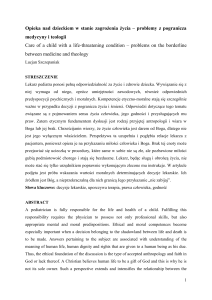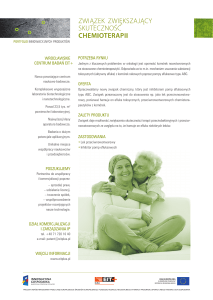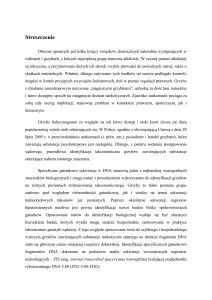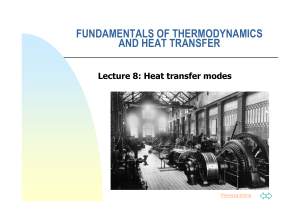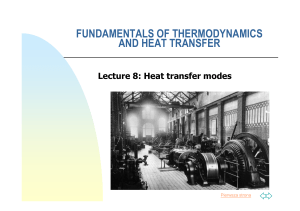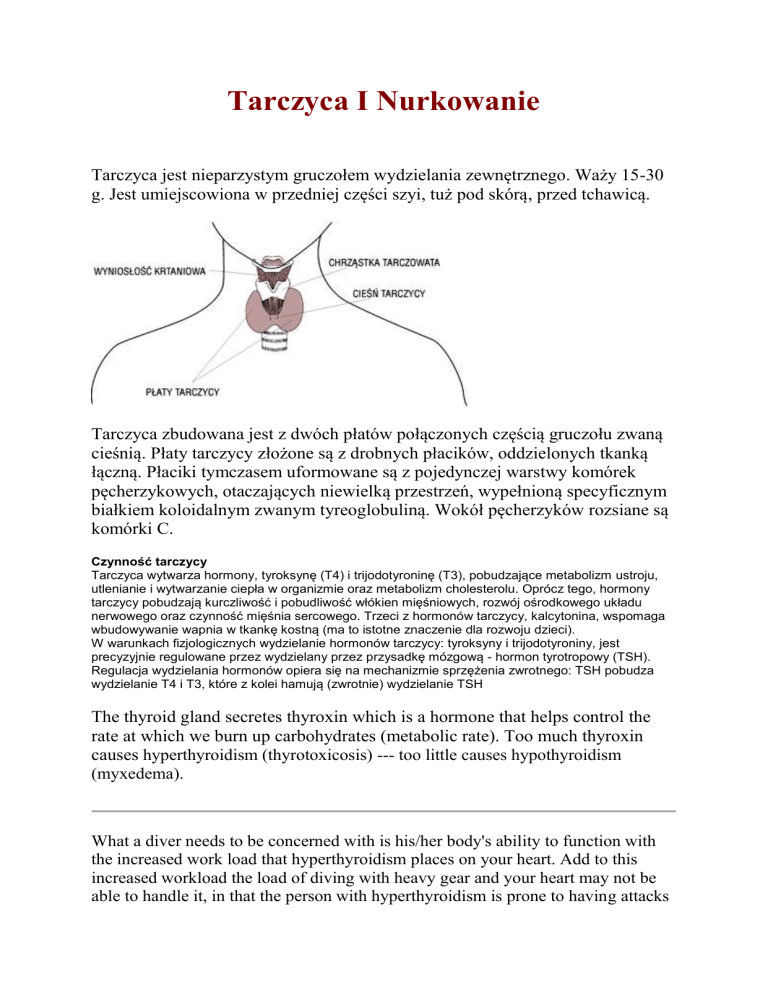
Tarczyca I Nurkowanie
Tarczyca jest nieparzystym gruczołem wydzielania zewnętrznego. Waży 15-30
g. Jest umiejscowiona w przedniej części szyi, tuż pod skórą, przed tchawicą.
Tarczyca zbudowana jest z dwóch płatów połączonych częścią gruczołu zwaną
cieśnią. Płaty tarczycy złożone są z drobnych płacików, oddzielonych tkanką
łączną. Płaciki tymczasem uformowane są z pojedynczej warstwy komórek
pęcherzykowych, otaczających niewielką przestrzeń, wypełnioną specyficznym
białkiem koloidalnym zwanym tyreoglobuliną. Wokół pęcherzyków rozsiane są
komórki C.
Czynność tarczycy
Tarczyca wytwarza hormony, tyroksynę (T4) i trijodotyroninę (T3), pobudzające metabolizm ustroju,
utlenianie i wytwarzanie ciepła w organizmie oraz metabolizm cholesterolu. Oprócz tego, hormony
tarczycy pobudzają kurczliwość i pobudliwość włókien mięśniowych, rozwój ośrodkowego układu
nerwowego oraz czynność mięśnia sercowego. Trzeci z hormonów tarczycy, kalcytonina, wspomaga
wbudowywanie wapnia w tkankę kostną (ma to istotne znaczenie dla rozwoju dzieci).
W warunkach fizjologicznych wydzielanie hormonów tarczycy: tyroksyny i trijodotyroniny, jest
precyzyjnie regulowane przez wydzielany przez przysadkę mózgową - hormon tyrotropowy (TSH).
Regulacja wydzielania hormonów opiera się na mechanizmie sprzężenia zwrotnego: TSH pobudza
wydzielanie T4 i T3, które z kolei hamują (zwrotnie) wydzielanie TSH
The thyroid gland secretes thyroxin which is a hormone that helps control the
rate at which we burn up carbohydrates (metabolic rate). Too much thyroxin
causes hyperthyroidism (thyrotoxicosis) --- too little causes hypothyroidism
(myxedema).
What a diver needs to be concerned with is his/her body's ability to function with
the increased work load that hyperthyroidism places on your heart. Add to this
increased workload the load of diving with heavy gear and your heart may not be
able to handle it, in that the person with hyperthyroidism is prone to having attacks
of paroxysmal atrial tachycardia or atrial fibrillation (episodes of rapid heart
beating) that can leave the person unconscious or unable to function. This would be
disastrous under water, even if you were just skin diving or snorkeling.
Atypical presentation, with cardiac or psychiatric symptoms, is common in men.
Patients with thyroid ophthalmopathy frequently have difficulty in upward gaze.
Corneal damage and optic neuropathy (inflammation of the optic nerve) can also
occur.
Return to diving: Return to diving may be considered once the patient is euthyroid
(normal thyroid level) on a stable dose of replacement medication if required.
Patients with ophthalmopathy will need to be disqualified while undergoing
treatment and may need to be disqualified permanently if treatment is unsuccessful.
Mask damage to the eye is a strong possibility in these situations.
Data required for decision making: Endocrinology consultation, appropriate
laboratory studies and ophthalmological consultation is also required if
exophthalmos (protrusion of eyes) or other eye conditions are suspected. Annual
confirmation of clinical and chemical euthyroid (normal) status is needed for
continued diving.
Therapy: There are 3 main forms of therapy: medical treatment with methimazole
or similar drugs; radioactive iodine; and surgery. Methimazole may cause side
effects including vertigo and drowsiness, as well as agranulocytosis (bone marrow
suppression). Diving is contraindicated in when their is bone marrow suppression
due to the possibility of increased infections. Surgery is declining in popularity but
may be the treatment of choice in females of childbearing age, because of the
possibility of ovarian damage from the radioactivity. A small number of cases will
require eye surgery.
Notes for consideration of the diver: Muscle pain, weakness and stiffness are the
presenting symptoms in 25% of patients. Weakness and tremor can be mistaken for
decompression accidents. Bulbar involvement can occur. With drug treatment,
there is a 50% relapse rate, some cases relapsing early. With radioactive iodine, 10
to 15% of cases will be hypothyroid (low thyroid condition) within 2 years, and 50
to 60% will be hypothyroid within 20 years. A third of patients undergoing surgery
will be hypothyroid within 10 years. Patients therefore have to review regularly for
the rest of their lives. The complete remission rate (those that get well) after
radioactive iodine is 86% with 60% developing myxedema (puffy swelling of low
thyroid condition) after 10 years and a further 2-3% a year developing myxedema
after that. Only 5% of patients with Graves' disease (hyperthyroidism) will have
ophthalmopathy (protruding eyes). More than 50% of cases of exophthalmos
(protruding eyes) will get better spontaneously within 5 years with no other
treatment than that of the underlying condition. Only 5% of patients will require
eye surgery.
Nitrox Diving and the Thyroid
Nitrox is the mixture of increased amounts of oxygen in the breathing air of divers.
Regular air is 20%; nitroz is mixed in 32%, 36% and higher. This allows for longer
bottom times, reduced risks of decompression illness (less nitrogen) but also
imposes a penalty of increased risk of oxygen toxicity. Certain drugs are
sympathomimetic (mimicking the action of the sympathetic nervous system) and
increase the metabolic rate, heart rate and rate at which O2 is utilized. Thyroid
hormone, either Synthroid or thyroxin produced by the body or taken by mouth act
in this manner. These drugs also have been found to increase the risk of oxygen
seizures at shallower depths (pressures).
See Nitrox at http://www.scuba-doc.com/nitrox.htm or
http://www.scuba-doc.com/nitroxlnks.html
For a good discussion of thyroid conditions, go to this web page
http://www.myweb.cableone.net/dickalf/
To my knowledge there have been no studies that have shown any increased risks
to the person with hyperthyroidism, even untreated. However, the prudent person
would certainly not dive if his thyroid functions were out of line --- just as he/she
should not play tennis or handball or some other physical exercise until they were
"euthyroid" (normal function of the gland). One month of treatment is not usually
long enough to become euthyroid -- although I've had patients who have responded
rapidly to medication. Your doctor should be the final arbiter in this matter.

